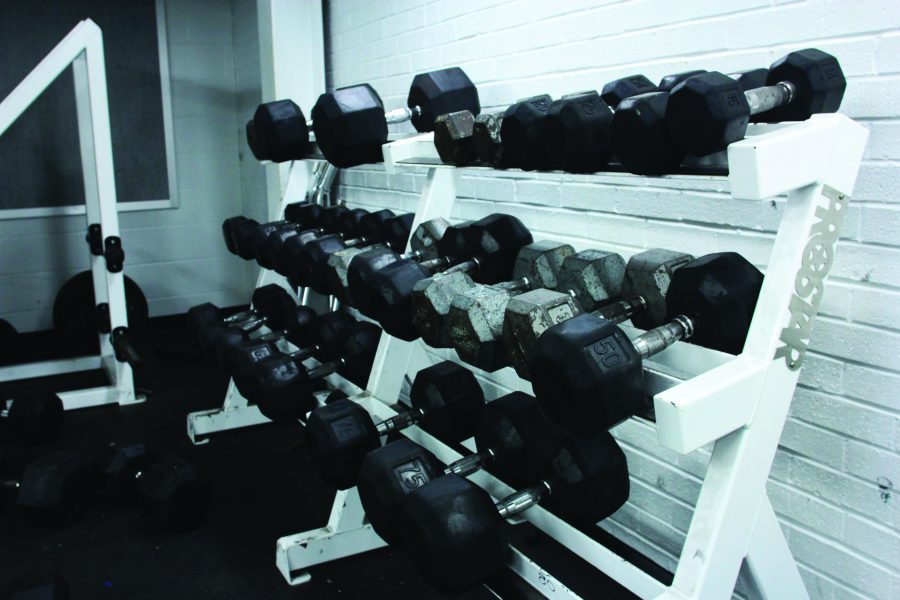
Before she knew they were supposed to improve her brain strength, senior Emily Vu played games on Lumosity for entertainment.
With more than 60 million members, according to lumosity.com, Lumosity is just one popular brain-training game that helps members “keep their brains challenged.”
“I used to play brain games on [Lumosity] until I had to start paying. Honestly I prefer those kinds of games over video games,” Vu said. “Playing [those] games is more for entertainment for me, not to help my brain.”
A similar game, Fit Brains by Rosetta Stone, claims to strengthen the brain by improving crucial skills such as memory, concentration and processing speed, according to fitbrains.com, by stimulating and challenging the brain.
“‘Brain strength could mean different things to different people,” Eric Chudler, Ph.D., executive director of the Center for Sensorimotor Neural Engineering at the University of Washington, said. “[‘Brain strength’] could mean a stronger memory. It could mean the ability to learn things faster, it could [mean] better problem solving abilities.”
Regardless of the specific meaning, Dr. Chudler said, it all comes down to strengthening neural circuits.
“Any time that you’re using the brain and challenging and taxing the brain, whether it’s through a brain game or through physical activity, you’re strengthening neural pathways that have already been established or you’re challenging the brain to create new neural pathways,” science teacher Amy McKenzie said. “I see physical activity and those brain games falling into that category of either reinforcing connections we already have or [challenging them to make new ones].”
This concept of rewiring the brain is called neuroplasticity, Dr. Chudler said. When a new skill is learned, new or stronger connections form between nerve cells and repetition of certain skills helps form connections.
“You want to make sure, though, that you’re reinforcing neural pathways that you want to reinforce,” McKenzie said. “I think about the stress response, like true anxiety type of responses … once that pathway, once those neural connections have been really well established, you tend to just go there, but if you can relearn some new habits and ways of responding to stress … your brain can actually create some new pathways and new circuits.”
This is a relatively new idea of changing the way the brain functions, McKenzie said, and it can apply to physical activity. Additionally, educators use this concept of repetition.
In the Advanced Reading and the Study Skills classes at the Sylvan Learning of Columbia, center director Jill Dudley said practicing skills is at the core of success for students.
“We have a class called Advanced Reading Techniques, and that’s actually, if you really boil it down … speed reading. It’s training your brain to read differently than you’ve read before,” Dudley said. “It’s training you to read at a faster pace and chunk words and chunk passages when you’re reading them while still maintaining your comprehension, which is very counterintuitive to what you’re normally told… but for things that are more … boring or dry you can use that.”
In Advanced Reading, instructors follow a learning plan and teach students different ways to push themselves to read faster, Dudley said. For instance, instructors tell students to read through a passage as fast as possible without worrying about comprehension; their speed, in words per minute, is then recorded along with their percent comprehension of the text.
Multiplying the speed by the percent comprehension gives students their Effective Reading Rate (ERR), which Dudley said is then used to measure progress.
“Everyone enters with a different speed and a different ability level, and you can see how much they grow. I think a lot of people increase their speed anywhere from 40 to 100 percent,” Dudley said. “I think it just depends on the student and how hard they push themselves and also if they’re choosing to practice the techniques at home.”
While practicing is a key factor in improving a student’s ERR Dudley said, it’s also a matter of pushing their brains to the limit. After students drive themselves to read faster, they can go back and learn exercises such as chunking passages and looking for keywords so they can improve comprehension. Then, she said, they can go back and find a happy medium rather than stay at their initial rate.
“A lot of it is stretching your brain to do things it’s never done before,” Dudley said. “It’s very divergent from anything you’ve ever done before when you’re learning and when you’re reading, and so you really have to train your brain to think totally totally differently.”
Additionally, Sylvan Learning Center’s Study Skills class helps students improve their study habits, which Dudley said takes a similar effort to do. For people who do struggle to be someone who manages time, it is a big change to keep track of their day and plan ahead.
“It’s a big, frightening thing for them to have to completely change their way of thinking.” Dudley said. “Changing habits, they say, usually takes at least 21 days. If you do something for 21 days, you’ve typically formed a new habit.”
The ability of the brain to form new habits and skills, as well as its ability to strengthen those pathways, allows individuals to train their bodies and brains to perform certain skills and make it look easy, McKenzie said, and this ease shows the training of their body and mind to do tasks seamlessly. Dr. Chudler said while not all skills will transfer, skills that use similar logic or parts of the brain are more likely to carry over to other behaviors.
For Dudley, a significant impact of learning good study skills and improving reading ability is how it carries over into other areas of a student’s academic life. Such skills carry over after high school into college as well as work.
“If you get to college, it doesn’t matter what class you’re in. You are going to have a textbook. Whether it’s a digital textbook or a physical textbook, you are going to have to read pages and pages of information to comprehend what you’re learning and so if you learn those reading comprehension strategies, you will automatically learn faster and better than you did before,” Dudley said. “A lot of students maybe can get through something if … they just drill it, drill it, drill it, drill it in their head, but if they don’t have the comprehension skills it’s harder for [the information] to really stick.”
Math skills are a little more central to math, she said, and reading comprehension will help students comprehend almost every subject. Consciously improving this skill, along with practicing and building good study habits, she said, will help students further down the road and allow them to take charge of their education and ultimately their future.
“That’s really important to being someone who is really thinking about their thinking.You’re not just learning by osmosis, you’re not just kind of going through the motions,” Dudley said. “You’re actively learning. You’re an active participant in your learning where you’re analyzing things and wanting to learn and understand the components to it … so it makes you a stronger human being.”
Written by Emily Franke

















































































